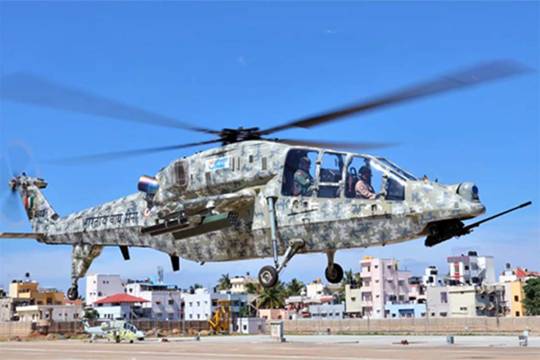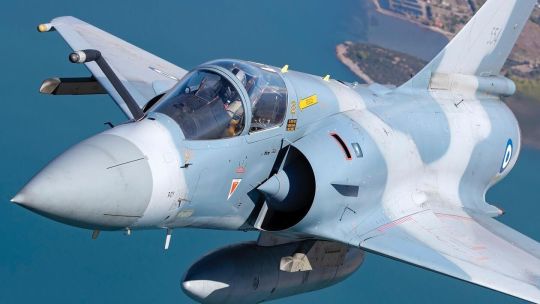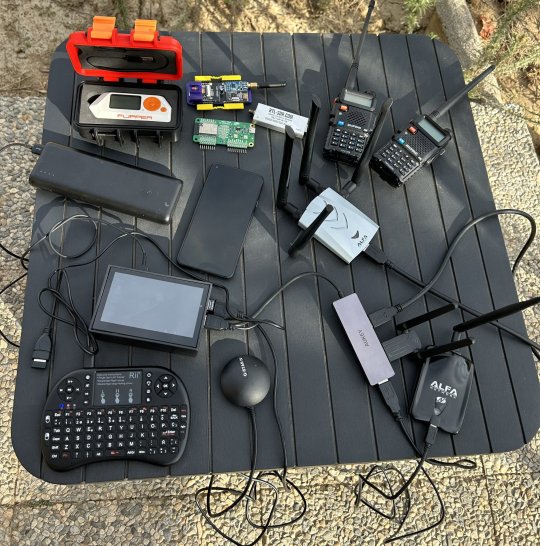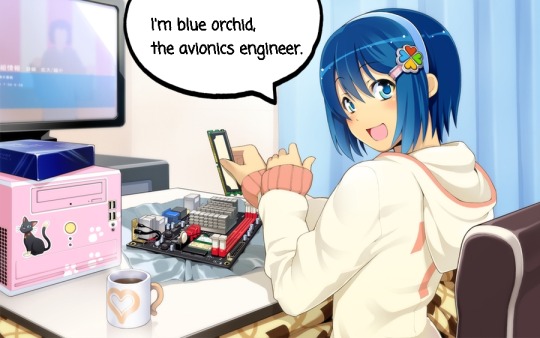#indian army helicopter
Explore tagged Tumblr posts
Text

#aircraft#airplane#aviation#military#aviacion#world war ii#wwii#navy#helicopter#army#air force#air defence#aerospace#SEPECAT#jaguar#indian air force#aviation art
48 notes
·
View notes
Text
MoD approves purchase of 97 LCA Tejas, over 150 LCH Prachand helicopters
New order for LCA Tejas, LCH Prachand helicopter: India’s apex defence procurement body, the Defence Acquisition Council (DAC) Thursday cleared the procurement of indigenously designed and developed 97 Light Combat Aircraft Tejas Mk 1A and 156 Light Combat Helicopters from state owned aircraft and helicopter manufacturer Hindustan Aeronautics Limited. The approvals also involve other major…

View On WordPress
3 notes
·
View notes
Text
India clears purchase of hundreds of Tejas combat jets, Prachand attack helicopters
India Defence News: India’s apex defence procurement body, the Defence Acquisition Council (DAC) Thursday cleared the procurement of indigenously designed and developed 97 Light Combat Aircraft Tejas Mk 1A and 156 Light Combat Helicopters from state owned aircraft and helicopter manufacturer Hindustan Aeronautics Limited. The approvals also involve other major defence procurements and upgrades…

View On WordPress
2 notes
·
View notes
Text
#Hindustan Aeronautics Limited#Indian Aerospace Industry#Indian Air Force#Indian Army#Indian Attack Helicopter#Indian Defence#LCH Prachand#Mini-AESA radar for LCH Prachand
0 notes
Text
Indian Army Grows Stronger Under the Leadership of Honorable Modi Ji: Colonel Rajyavardhan Rathore

The Indian Army, one of the world’s most formidable defense forces, has reached new heights under the leadership of Prime Minister Narendra Modi. Spearheaded by strategic reforms, technological advancements, and a renewed focus on self-reliance, India’s defense ecosystem has transformed significantly. Colonel Rajyavardhan Rathore, a decorated ex-army officer and political leader, has praised PM Modi’s unwavering dedication to national security and the welfare of armed forces personnel.
A Renewed Vision for India’s Defense
Under PM Modi’s leadership, a robust vision for a modern, self-reliant Indian Army has been implemented. These efforts ensure not only national security but also elevate India’s stature on the global stage.
Key Transformations in the Indian Army
1. Strengthening Defense Infrastructure
Construction of strategic roads, bridges, and tunnels in border areas, including the iconic Atal Tunnel in Himachal Pradesh.
Enhanced facilities in high-altitude regions like Ladakh to improve operational readiness.
2. Advanced Weaponry and Equipment
Introduction of cutting-edge equipment such as Rafale fighter jets, Apache helicopters, and S-400 missile systems.
Indigenously developed weapons like the Arjun Mark 1A tank and Tejas fighter jets, showcasing India’s engineering prowess.
3. Emphasis on Self-Reliance
The Make in India initiative has bolstered domestic defense manufacturing, reducing dependency on imports.
Partnerships with private industries to develop next-generation military technology.
4. Border Security Enhancements
Deployment of advanced surveillance drones and radars along the borders.
Strengthened patrol and intelligence systems to ensure swift responses to potential threats.
Col Rajyavardhan Rathore’s Insights
Colonel Rathore, a veteran of the armed forces, has highlighted how PM Modi’s leadership has:
Empowered Soldiers: By focusing on their welfare and operational efficiency.
Strengthened India’s Defense Backbone: Through bold initiatives and modernization.
Inspired National Pride: By showcasing India’s military capabilities globally.
Milestones Achieved Under PM Modi’s Leadership
1. Strategic Strikes
Surgical Strikes (2016): A decisive response to cross-border terrorism.
Balakot Airstrike (2019): Demonstrated India’s ability to neutralize threats beyond its borders.
2. Enhanced Global Partnerships
Strengthening military ties with nations like the USA, Russia, and Israel.
Conducting joint exercises to improve interoperability and operational readiness.
3. Welfare Reforms for Soldiers
Implementation of One Rank One Pension (OROP), fulfilling a long-standing demand of ex-servicemen.
Improved healthcare, housing, and education facilities for defense personnel and their families.
Challenges Addressed by the Government
Bridging the technology gap by investing in Artificial Intelligence, cyber defense, and advanced weaponry.
Ensuring logistical support and supply chain resilience in remote and high-altitude areas.
Boosting morale through recognition of soldiers’ contributions and sacrifices.
India’s Position on the Global Stage
With a stronger and more capable Indian Army, the country has solidified its position as a global power. From peacekeeping missions to humanitarian aid, the Indian Army continues to demonstrate its prowess and commitment.
Conclusion
Under the visionary leadership of Prime Minister Narendra Modi, the Indian Army has become a force to reckon with. From modernization to welfare, the reforms have strengthened not just the military but also the nation’s spirit. Leaders like Colonel Rajyavardhan Rathore recognize and celebrate these achievements, emphasizing the importance of a robust and prepared defense force for a secure future.
3 notes
·
View notes
Text

Greece evaluates sale of Mirage 2000 jets to India 🇮🇳
Although the expected selling price is modest, Athens sees an opportunity for broader strategic cooperation with New Delhi.
Fernando Valduga By Fernando Valduga 02/08/2024 - 19:28in Military
The leadership of the Hellenic Air Force is exploring the possibility of selling the 18 Mirage 2000 EGM/BGM to India, a proposal that was communicated to the Prime Minister's office and the Ministry of National Defense of Greece.
The aircraft served until 2022 in the 332ª "Hawk" Squadron, and most of them are not in flight condition, while some were cannibalized to keep the others flying. However, it seems that there is fertile ground between the two parties and do not rule out the possibility of the subject of the sale of the fighters to be discussed during the future visit of Prime Minister K. Mitsotakis to New Delhi.
Squadron 332 struggled with problems of availability of the Mirage 2000, resulting in the abandonment of some aircraft on the runways of Tanagra and others cannibalized because they were beyond the operational life.
At the end of 2023, New Delhi decided to communicate its interest to the Greek part in acquiring used Mirage 2000, as it plans to keep these fighters in service for at least another decade. Athens, aiming to further strengthen defense relations with India, has already decided to sell the retired Mirage. The Air Force General Staff expects to profit

However, the criterion for its sale is more political than economic. In the General Staff of the Greek Air Force, which is directly involved, they do not expect profits. On the contrary, they maintain modest expectations regarding the selling price of aircraft, which are unfortunately in poor condition. The experts' estimate is that, at best, they will be sold for a few million euros.
These 18 Mirage, which carried the weight of the interceptions in the skies of the Aegean Sea, were withdrawn from service in January 2022 with the arrival of the Rafale. The aircraft were inactivated due to lack of support long before the arrival of the new French fighters. However, there are still users of the French delta fighter, such as India, which maintains about 50 aircraft in three combat squads and may be interested in supplementing any losses or renewing its stock of spare parts for existing ones.
The Hellenic Air Force is also evaluating the future of the newest Mirage 2000-5 operated by Squadron 331 "Teseu". Although the support contract has improved its availability, concerns about its compatibility with evolving technologies and high integration costs, such as the proposed Link-16 terminal, have led to a reassessment.
Tags: Military AviationHAF - Hellenic Air Force / Greek Air ForceIAF - Indian Air Force/Air Force of IndiaMirage 2000
Sharing
tweet
Fernando Valduga
Fernando Valduga
Aviation photographer and pilot since 1992, he has participated in several events and air operations, such as Cruzex, AirVenture, Dayton Airshow and FIDAE. He has works published in specialized aviation magazines in Brazil and abroad. He uses Canon equipment during his photographic work in the world of aviation.
Related news
HELICOPTERS
France buys more NH90 helicopters for its Special Operations Forces
08/02/2024 - 18:25
MILITARY
Ukraine launches new 'Kamikaze' jet drone against Russia
08/02/2024 - 17:15
MILITARY
RAF Globemaster takes British Army Apache attack helicopters to the Arctic
08/02/2024 - 15:12
MILITARY
US approves sale of aerostatic radar systems to Poland for $1.2 billion
08/02/2024 - 14:19
MILITARY
BAE Systems unveils improved autonomous collaborative platform at the World Defense Show
08/02/2024 - 12:55
BRAZILIAN AIR FORCE
FAB provides help to the Colombian Air Force
08/02/2024 - 12:29
8 notes
·
View notes
Text

Indian Army AA gunners cover a troop/supply convoy from potential Pakistani helicopter attacks during the 1999 Kargil War
21 notes
·
View notes
Text
Indian films I can't find
If any of you know where I can access any of these, I'd be super grateful. My preference is for source with English subtitles, and if possible visuals in reasonable condition.
Starring SRK
Army (1996), Baadshah (1999), Bhoothnath (2008), Circus (1989-90), Deewana (1992), Devdas (2002), Dil Aashna Hai (1992), Guddu (1995), Har Dil Jo Pyar Karega (2000), Heyy Babyy (2007), Hey Ram (2000), Hum Tumhare Hain Sanam (2002), Idiot (1991), Josh (2000), Karan Arjun (1995), King Uncle (1993), Koyla (1997), Pardes (1997), Ra.One (2011), Raju Ban Gaya Gentleman (1992), Shakti: The Power (2002), Trimurti (1995), Yeh Lamhe Judaaai Ke (2004), Yes Boss (1997), Zamaana Deewana (1995)
Starring Kajol
Dushman (1998), Gupt: The Hidden Truth (1997), Helicopter Eela (2018), Pyaar to Hona Hi Tha (1998), Pyaar Kiya To Darna Kya (1998), Raju Chacha (2000), Tanhaji: The Unsung Warrior (2020), U Me Aur Hum (2008)
Misc
Bajirao Mastani (2015), The Dirty Picture (2013), Ek Tha Tiger (2012), Enthiran: The Robot (2010), Jab We Met (2007), Jaane Bhi Do Yaaro (1983), Kahaani (2012), Monsoon Wedding (1995), Mother India (1957), Mughal-e-Azam (1960), Neerja (2016), Omkara (2006), Panga (2020), Secret Superstar (2017), Thapped (2020)
17 notes
·
View notes
Text
Events 7.12 (after 1920)
1920 – The Soviet–Lithuanian Peace Treaty is signed, by which Soviet Russia recognizes the independence of Lithuania. 1943 – World War II: Battle of Kursk: German and Soviet forces engage in the Battle of Prokhorovka, one of the largest armored engagements of all time. 1948 – Israeli Prime Minister David Ben-Gurion orders the expulsion of Palestinians from the towns of Lod and Ramla. 1960 – Orlyonok, the main Young Pioneer camp of the Russian SFSR, is founded. 1961 – Indian city Pune floods due to failure of the Khadakwasla and Panshet dams, killing at least two thousand people. 1961 – ČSA Flight 511 crashes at Casablanca–Anfa Airport in Morocco, killing 72. 1963 – Pauline Reade, 16, disappears in Gorton, England, the first victim in the Moors murders. 1967 – Riots begin in Newark, New Jersey. 1971 – The Australian Aboriginal Flag is flown for the first time. 1973 – A fire destroys the entire sixth floor of the National Personnel Records Center of the United States. 1975 – São Tomé and Príncipe declare independence from Portugal. 1979 – The island nation of Kiribati becomes independent from the United Kingdom. 1995 – Chinese seismologists successfully predict the 1995 Myanmar–China earthquake, reducing the number of casualties to 11. 1998 – The Ulster Volunteer Force attacked a house in Ballymoney, County Antrim, Northern Ireland with a petrol bomb, killing the Quinn brothers. 2001 – Space Shuttle program: Space Shuttle Atlantis is launched on mission STS-104, carrying the Quest Joint Airlock to the International Space Station. 2006 – The 2006 Lebanon War begins. 2007 – U.S. Army Apache helicopters engage in airstrikes against armed insurgents in Baghdad, Iraq, where civilians are killed; footage from the cockpit is later leaked to the Internet. 2012 – Syrian Civil War: Government forces target the homes of rebels and activists in Tremseh and kill anywhere between 68 and 150 people. 2012 – A tank truck explosion kills more than 100 people in Okobie, Nigeria. 2013 – Six people are killed and 200 injured in a French passenger train derailment in Brétigny-sur-Orge.
2 notes
·
View notes
Text

Is #WayBackWednesday a thing? -- it is now! #wbw Check out this photo & caption..."WARRIOR COMES OF AGE -- An Apache Indian heralds the rollout of the first production AH-64A APACHE Attack Helicopter for the U.S. Army 2 months ahead of schedule on Sept. 31 at Hughes Helicopters, Inc APACHE Assembly and Flight Test Center in Mesa, Ariz. U.S> Army requirements call for at least 515 of the day/night and adverse weather attack helicopters to be built through 1988. A total of 59 product APACHEs are currently under contract, and Congress recently authorized an additional 112 AH-64As for Fiscal Year 1984. #75YearsAbovetheBest
3 notes
·
View notes
Text
Happy Thxgivin Y'all
youtube
Craig Awww Yrrr You Rock Thxx 💖
youtube

An AI-enabled radio jamming system developed by Vanderbilt researchers and tested with soldiers from the 101stAASLTDIV is being deployed for training of NATO and NATO-partner units in Europe. The ADSR system is part of the USArmy Pathfinder program.
On the right to repair, we're glad Biden pushed the 📱💻 Fair Repair Act via an EO, backed by the Hackers' advocacy campaign.
Canada and France support our American Folks. Can Oxblood and Count Zero translate this podcast for Kingpin? His hardware hacking skills are needed in avionics.





youtube


Engineers are working to make future air travel safer. They've created risk-prediction models using two decades of U.S. accident and safety records following the work of a five-year, $10 million NASA grant.
2 notes
·
View notes
Text

The following are the contents of the article, including a description of the infobox, listed in succession.
(title of infobox in Chinese and Manchu languages) Chinese Imperial Air Force (English) 中華帝國空軍 (Hanzi) Chung-hua Ti-kuo K'ung-chün (Wade-Giles, the most widely used Chinese romanization system in this timeline)
(Below is the name in Manchu script, it only renders sideways here) ᡩᡠᠯᡳᠮᠪᠠ�� ᡤᡠᡵᡠᠨ ᡳ ᠠᠪᡴᠠᡳ ᠴᠣᠣᡥᠠ (Manchu) Dulimbai gurun-i Abkai Cooha (Manchu romanization)
Emblem of the Chinese Imperial Air Force:
Symbol consisting of the roundel with a blue-green-white-red dragon flying around the central red sun, vertical red and yellow banners with the name of the air force in white Hanzi and Manchu script, two outspread white bird wings, and the red imperial crown of the Great Qing Emperor
Founded: 10 August 1910; 113 years ago (as Army Flying Corps) 25 December 1929; 93 years ago (as current service)
Country: China Type: Air force
Role: Aerial warfare Airborne forces Air defense
Size: 300,000 active personnel (2023) 4,000+ aircraft (2023) Part of: Chinese Imperial Military Headquarters: Peking (this spelling remained popular in the English-speaking world) Motto(s) 盡忠報國 English: "boundless loyalty to the country" (the text of Yue Fei's famous tattoo) Colors: Blue, yellow, red (a medium cerulean blue, a slightly warm yellow, and a bright cherry red)
March: Quick: Dragon Aviators' March Slow: Five Thousand Years Anniversaries: Air Force Day (14 August) Aviation Day (10 August)
List of Engagements: Late Kuang-hsü Crisis
(Second Canton Revolt)
(Wu-ch'ang Rebellion)
(Hatchet Gang Rebellion) Sino-German War First World War Russian Civil War
(West Siberian Intervention) Warlord Era
(Imperial Protection War)
(Yün-Kwei War)
(Southern Expedition)
(Sinkiang Campaign) Outer Mongolia Insurgency Second Sino-Japanese War Second World War Chinese Civil War
(Tai-wan Strait Crisis) Korean War
(Yalu-Tumen Intervention) Sino-Indian War
(Battle of Bhutan) Tibet Uprising (1959)
(Operation Wind Shadow) Third Indochina War
(Operation Phoenix Eye) Spratly Islands Conflict Indonesia-Malaya War
(Operation Celestial Spear) Uzbekistan War
(Operation Black Tortoise)
Website: (Official website link)
Commanders: Commander-in-Chief: Jui-wen Emperor (era name 睿文, means "Forward-thinking culture") Director of the IDC: Li Kuo-t'ai Minister of War: Marshal Fan Sung-yün Chief of the Air Staff: Marshal Wei Chao-lin
Insignia: Roundel: Concentric circles of blue, yellow, and red, with a thin ring of blue on the outside, a large area of yellow inside it, and a small red circle at the center Fin flash: high visibility, Blue-Yellow-Red tricolor, low visibility yellow and red alone. Ensign: Black Ensign with Qing imperial flag in the canton. In the black field are depictions in white of the Little Dipper and the North Star, arranged in an arc from the middle fly to the lower hoist. The black field represents the night sky and commemorates the air force's famous night raids during World War II.
Aircraft flown: Bomber: Hsi-an JH-7, H-6 Electronic warfare: Russo-Balt RB-154, Shan-hsi Y-8, Shan-hsi Y-9, J-16D Fighter: Chʻêng-tu J-7, Mukden J-8, Chʻêng-tu J-10, Mukden J-11, Mukden J-16, Chʻêng-tu J-20, Samara Sa-27, Sa-30MKK, Sa-35S Helicopter: Harbin Z-8, Harbin Z-9 Attack helicopter: Harbin Z-19, CAIC Z-10 Utility helicopter: Harbin Z-20 Interceptor: Mukden J-8 Trainer: K'un-lun L-15, K'un-lun JL-8, JL-9 Transport: Hsi-an Y-20, Shan-hsi Y-9, Shan-hsi Y-8, Hsi-an Y-7, Zhukovsky Zh-76 Tanker: H-6U, Zh-78
Chinese name in various transcriptions used in this world: Traditional Chinese 中華帝國空軍 (used on the mainland) Simplified Chinese 中华帝国空军 (used on Tai-wan) Literal meaning: Chinese Imperial Air Force Bopomofo: ㄓㄨㄥ ㄏㄨㄚˋ ㄉㄧˇ ㄍㄨㄛˇ ㄎㄨㄥ ㄐㄩㄣ Wade–Giles: Chung-hua Ti-kuo K'ung-chün Cantonese Jyutping: Zung-waa dai-gwok Hong-gwan
(Below is the separate box for further reading on the Qing military that accompanies the main infobox in most such articles)
Armed Forces of the Great Ch'ing Empire Octagonal symbol known as "the Eight Corners" containing the colors of all the Eight Banners arranged to resemble the character 卐 (Wan, important to state-sponsored Vajrayana religion)
Executive departments:
Imperial Defence Council
Ministry of War
Staff:
Director of the IDC
General Staff of the Military
Works Department of the IDC
Censorate of the IDC
Services:
Chinese Imperial Military
Army
Navy
Air Force
Strategic Support
Independent troops:
Military Police Force
T'uan-lien Militia
Pao-chia Guards
Eight Banners
Special operations force:
Special Operations Department
Special Police Unit of the MPF
Snow Leopard Commando Unit
Mountain Eagle Commando Unit
Other troops:
CIM Joint Logistics Support Force
Military districts:
Eastern Theater Command
Southern Theater Command
Western Theater Command
Northern Theater Command
Central Theater Command
History of the Chinese military
Military history of China
Military ranks of China
Ranks of the Imperial Army
Ranks of the Imperial Navy
Ranks of the Imperial Air Force
(Main body of the article below here)
The Chinese Imperial Air Force (CIAF; Chinese: 中華帝國空軍; Wade–Giles: Chung-hua Ti-kuo K'ung-chün), also referred to as the Chinese Air Force (中華空軍) or the Imperial Air Force (帝國空軍), is the principal aerial service of the Great Ch'ing Empire, a part of the Chinese Imperial Military along with the Imperial Navy and the Imperial Army. The CIAF was officially established on 25 December 1929 and it is composed of five branches: aviation, ground-based air defense, radar, Airborne Corps and other support elements.
The development of the CIAF began with the creation of the Pei-yang Army Flying Corps in 1910, which flew French biplanes in reconaissance and bombing operations against rebels. With the splintering of the Pei-yang Army in 1916, elements of the Flying Corps entered the service of the various warlords vying for control of the government. During the First World War, ten bombers were shipped to Shang-hai for the Peking Government's use in dislodging the German Navy from Kiautschou Bay. The Flying Corps would participate in the Southern Expedition using primarily the Avro Avenger fighter aircraft and the Avro Aldershot heavy bomber provided by the United Kingdom, and in 1929, with the warlords brought together or defeated, the Air Staff was created as a separate branch of the military. The UK also assisted with the expansion of the Chinese aerospace industry during the Second Sino-Japanese War. Changes in the organization of the CIAF followed by modernization programs in the 1980s and increased technology development in the 21st century resulted in the J-20 stealth multirole fighter, the first of its kind for China.
The Air Force's mission is to secure the objectives of the Imperial Defence Council which are to "provide necessary security and defense of the Empire and to support the Government's international obligations". The highest-ranking military officer in the Air Force is the Chief of the Air Staff, who exercises supervision over Air Force units, while the IDC assigns Air Force components to unified combatant commands. Some units are also ceremonially affiliated with the Eight Banners, but since 1931 have been functionally integrated into the civilian command structure. The Helicopter Command contains most of the rotary-wing aircraft of the CIAF. Most of the air force is based in Mainland China, but some units do serve on foreign operations (principally over Manipur and Bukhara) or at long-established foreign bases (Havana, Ream, Djibouti, and Gorno-Badakhshan). Although the CIAF is the principal Chinese air power arm, the Imperial Navy's Fleet Air Corps and the Army Air Corps also operate armed aircraft.
Contents: 1 History 1.1 Origins 1.2 Warlord Era and Yüan Ch'en 1.3 First United Front 1.4 Second Sino-Japanese War 1.5 Chinese Civil War 1.6 Korean War to the Sino-Russian Split 1.7 1970s to 1980s 1.8 P'ing-hsiang era (平祥, Peaceful and Auspicious) 1.9 Jui-wen era 2 Personnel 2.1 Ranks and insignia 2.2 Commanders 3 Structure 3.1 Senior leadership 3.2 Headquarters 3.3 Commands 3.3.1 Transport command 3.3.2 Long-range command 3.3.3 Expeditionary command 3.3.4 Training and research 3.4 Order of battle 3.5 Airbases 3.6 Aerobatic display team 4 Aircraft 4.1 Combat air 4.2 Intelligence 4.3 Maritime patrol 4.4 Helicopters 4.5 Training aircraft 4.6 Advanced jet training 5 See also 6 References 6.1 Citations 6.2 Sources 7 Further reading 8 External links
History: (Further information: link to page "Aviation in China")
Origins:
Today's Chinese Imperial Air Force (CIAF) traces its roots back to August 10, 1910 when the government authorized the creation of the Army Flying Corps in an effort to improve intelligence and gain the upper hand on insurrections. On the same day, construction began on Peking Nan-yüan Airport as part of a program to modernize national infrastructure. Initiated in the wake of the Boxer Protocol in 1901, the Keng-tzu New Policies were ordered by the Empress Dowager Tz'ŭ-hsi to reform government bureaucracy along with the military, and by the start of the Hsuan-t'ung reign a group of preparatory departments had been organized for experimentation with new technology and administrative systems. In 1903 an imperial edict expanded the Wu-wei Corps to 36 divisions, creating the Pei-yang Army, in 1905 the Imperial Examinations were abolished, and in 1907 a new law code and judicial system were rolled out. That same year, the tax code was reformed and the rail system was nationalized, which greatly helped the empire's finances but caused significant unrest as well.
With the death of Jung-lu in 1903, General of the Right Division Yüan Shih-k'ai became commander of the Pei-yang Army. His role in the 1898 coup d'état against the Kuang-hsü Emperor made him many enemies, and when the empress dowager and the emperor died within a day of each other in 1909, he was forced to resign by Prince Ch'ün and return to his home village ostensibly for health reasons. In spite of this, Yüan remained in communication with his associates in the army. In the wake of the February 1910 Keng-hsü Army Uprising, he authorized the Pei-yang Army to found a flight school at Nan-yüan to train a group of eight pilots to fly reconnaisance using Cauldron Type D biplanes purchased from France, improving the army's ability to respond. In early 1911, the Aviation Research Institute was founded.[6]
Warlord Era and Yüan Ch'en:
(Photo labeled "Nan-yüan Air Force Academy drillmasters in front of Avro aircraft") (Photo labeled "Voisin V in Shang-hai")
In 1911, a major popular uprising began in Canton while another army mutiny occurred at Wu-ch'ang. In a panic, Empress Dowager Lung-yü convinced Yüan to come out of retirement and lead the war effort in exchange for the position of Prime Minister and the final adoption of the Hsuan-t'ung Constitution. The rebellion was crushed by the end of 1912, and the T'ung-meng-hui (TMH) revolutionary society was forced to flee to Japan once again with numerous dead. With the south pacified, Yüan feared he would no longer be of use to the Ch'ing court. In spite of the bureaucrats' protests, he brought his army into the capital in order to protect himself and his allies from execution, essentially holding the court hostage. For five years, he and his majority Han chinese cabinet ruled the country.
Reasoning that China desired a new Han-ruled dynasty, Yüan revised the constitution to make himself a dictator before announcing plans to seize the throne as the Hung-hsien Emperor of Great Ch'en, allowing his army to plunder Manchu estates as northern Chinese cities descended into racial violence. The Ch'ing court fled to Gan-su, where support for Han rule was lower, under the protection of Ma An-liang and Shaan-hsi governor Ch'ien Neng-hsün. With the divided country now in civil war, many of Yüan's closest supporters abandoned him, and the solidarity of his Beiyang clique of military protégés dissolved. The Hung-hsien Emperor was opposed by not only the Ch'ing and the minorities, but far more importantly by his subordinate military commanders, who believed that his usurpation would allow him to rule without depending on the support of the military.
A coalition of governors and officers led by An-hui governor Liang Tun-yen launched the Imperial Protection War against him, officially in the name of the Hsuan-t'ung Emperor, while the Air Corps rebelled as well and dropped bombs on the Forbidden City. Yüan's health continued to decline, and his death in 1916 paved the way for the return of K'ang Yu-wei and other anti-Yüan reformist exiles. The Prince Ch'ing Cabinet retook control of the capital, denouncing Yüan and purging his allies, while government authority was greatly damaged. Provinces broke away and the TMH returned in 1917 to start a Han-nationalist insurgency in Hunan.
The fall of Yüan Shih-k'ai created a power vacuum and fractured the army. Fearing for their lives, many of the southern Pei-yang generals revolted and took control of the provinces as military governors. Minister of War Wang Shih-chen, nominally in charge of the Pei-yang Army, abolished it and reorganized the loyalist forces into the Chinese Imperial Military. Expanding the airbases at Nan-yüan and Ta hsiao-ch'ang, Marshal Wang was able to acquire more machines from Britain and France when the new army attacked the German Leased Territory of Kiautschou Bay in 1917 and China was drawn into the First World War.
As part of the allied Operation Asher, ten Voisin V pusher bombers were produced in France and shipped to Shang-hai. In spite of having defeated the 1914 allied attack, by this time the garrison was low on supplies and the Chinese aircraft proved devastating to German morale during the Second Siege of Tsing-tao. An avid aviation enthusiast, the Hsuan-tung Emperor himself also took great interest in the development of the Air Corps, and when he assumed direct rule in 1924 he personally invested large amounts of his constitutional subsidy into it.
First United Front:
During the late 1920s, the Ch'ing Imperial Government formed the first united front with the liberal T'ung-meng Hui (TMH) party against competing warlords in a bid to reunite a fractionalized China, combining the liberal Wu-han Government with the Imperial Assembly. In this period, various airplanes were purchased and deployed by warlords in their struggle for power until nominal Chinese reunification in 1929 following the Southern Expedition which saw the use of Avro Aldershot heavy bombers to inflict serious damage on the infrastructure of several provinces in support of the government offensives. That year, the CIAF was designated as an independent branch of the armed forces. The eighteen graduate pilots of the military flight school included nine republican and nine monarchist pilots who were sent to the Russian Federation for two years of advanced flight training under the tutelage of the more experienced Russian Air Force. Two of the imperial graduates, Kuo Tzu-han and Sung Chien-yü, continued to serve in the Russian Air Force for five years until, in September 1928, they returned to Ti-hua as instructors.
At the same time, Tsai-chen the fifth Prince Ch'ing established the Bureau of Aeronautics in 1920. Subsequently, the organization continued to develop, and successively established an aircraft factory, an aviation command, and a new aviation school in Hsi-an. In May 1927, the Aviation Department of the Ministry of War was changed to the Aviation Committee of the Defense Council of the Imperial Government. By 1929, the government's aviation force was officially independent from the Army General Command and became an independent service.
Second Sino-Japanese War:
(Photo labelled "Self-developed Chinese transport aircraft during the Battle of Ch'ang-sha")
Following the abolition of many of their social privileges in the Hsin-wei Reform Act, many Banner families experienced poverty and violence. In response to perceived neglect, they became disaffected with the Hsuan-t'ung Emperor. Some sided with the northeastern Pei-yang Army generals of the Fêng-tʻien Clique, while some sought support from Imperial Japan.
A minor dispute known as the Wan-pao-shan incident between Han and Korean farmers occurred on July 1, 1931. The issue was highly sensationalized in the Imperial Japanese and Korean press, and used for considerable propaganda effect to increase anti-Chinese sentiment in the Empire of Japan. Believing that a conflict in Manchuria would be in the best interests of Japan, Kwantung Army Colonel Seishirō Itagaki devised a plan to provoke Japan into invading Manchuria by setting up a false flag incident for the pretext of invasion. The Independent Garrison Unit of the 29th Infantry Regiment (which guarded the South Manchuria Railway) placed explosives near the tracks, but far enough away to do no real damage.
On the morning of September 19, two artillery pieces installed at the Mukden officers' club opened fire on the Chinese garrison nearby, in response to the alleged Chinese attack on the railway. Chang Hsueh-liang's small air force was destroyed, and his soldiers fled their destroyed Pei-ta-ying barracks, as five hundred Japanese troops attacked the Chinese garrison of around seven thousand. The Chinese troops were no match for the experienced Japanese troops. By the evening, the fighting was over, and the Japanese had occupied Mukden at the cost of five hundred Chinese lives and only two Japanese lives, thus starting the greater invasion of Manchuria. By 1932, most of the region was under Japanese control and the Empire of Manchukuo was created, while a young member of the Hitara clan was enthroned in Ch'ang-ch'un as the K'ang-te Emperor.
The CIAF immediately dispatched combat aircraft to the Hung-ch'iao Aerodrome during the January 28th Incident of 1932, and aerial skirmishes occurred for the first time between China and the Imperial Japanese. In February 1932, US Reserve Lt. Robert McCawley Short, who was transporting armed Chinese aircraft, shot down an IJN aircraft on February 19, 1932, and downed another on February 22 before he was killed (he was posthumously raised to the rank of colonel in the CIAF). During the early days of China's war of resistance against the Japanese invasion, the Imperial Air Force participated in several battles, including attacking Imperial Japanese Navy warships along the Yangtze River and supporting the Battle of Shang-hai. By this time, the Imperial Air Force's main fighter models were the Curtiss Hawk II and Hawk III fighters. On August 14, 1937, Japanese Imperial Navy bombers bombed Hang-chou Chien-ch'iao Airport, but was defeated by the CIAF; therefore, August 14 was designated as Air Force Day by the Imperial Government. In May 1938, the CIAF dispatched two B-10 bombers to Japan to drop leaflets.
By the middle of the war, intelligence units of the Imperial Japanese Navy cracked the radio codes of the Chinese army, putting the Air Force under attack. In the middle and late stages of the Second Sino-Japanese War, the addition of Chennault and other foreign pilots, as well as the support provided by the United States after joining the Allies, restructured the combat power of the CIAF and participated in the Hsin-chu Air Attack, and air raids on Japan. After the end of World War II, in June 1946, the Aviation Committee of the Military Committee of the Imperial Government was changed to the General Command of the Air Force.
Chinese Civil War:
In January 1941, as intensifying clashes between imperial and TMH forces ended the second united front against invading Japanese forces, the government's Imperial Defense Council (IDC) established the Air Force Engineering School with Kuo as commandant and Sung as head instructor. In May 1944, just over a year before the Japanese surrender to Allied forces, the IDC established an Aviation Section in Hsi-an with Kuo as its director and Sung as deputy director. Two years later in May 1946 and after the withdrawal of Japanese troops, the IDC established the Northeast Old Aviation School in Kirin. By 1949 the Aviation Section of the IDC had 560 trained personnel (125 pilots and 435 ground support specialists), purchased 435 aircraft from the Russian Federation, acquired 115 republican aircraft, and operated seven military flight schools.
During the Second Civil War between the T'ung-meng Hui and the Imperial Government from 1946 to 1949, the Air Corps of the Republic of China participated in combat support and air strikes against the CIAF on the mainland and around the Tai-wan Strait. In October of the same year, the ACROC assisted in stopping the advance of the Chinese Imperial Army at the Battle of Ku-ning-t'ou in Quemoy, and in April 1949, the Air Corps retreated to the former Japanese colony of Tai-wan along with other government departments of the ROC. In October 1952, Marshal Chou Ên-lai and the battle-hardened army of the Chinese Communist Party broke with the T'ung-meng Hui and launched a successful revolution with the help of Indigenous Taiwanese, abolishing the National Assembly of the TMH and founding the People's Republic of China; the world's second socialist state after India. The ACROC sided with the revolution and became the PRCAAF. As relations soured between the left liberal governments of NATO and the right authoritarian governments of the Eurasian Pact, the United States intervened on behalf of the PRC and preserved the island's self-government. There have been at least 11 air battles in the area since 1952.
The real opportunity to obtain a large number of aircraft came from the Northeast Alliance Aviation School established in 1946 after the end of the Anti-Japanese War. At this time, the Imperial Government seized Japanese-made aircraft, trained pilots, and received a large number of American-made aircraft from the surrendered ROC Air Force in southeast China and Nanking during the civil war. On March 17, 1949, personnel were transferred from the Northeast Aviation School to establish the "Imperial Defence Council Aviation Bureau" in Peking. The director Ch'ang Ch'ien-k'un (the executive vice president of the Northeast Aviation School), under the Combat Education Department, Aeronautical Engineering Department, Civil Aviation Department, Information Section and Supply Section, staffed 64 people. In May 1949, the Navigation Management Office, the Secretariat, and the Imperial Office were added, and the number was expanded to 172 people. The major military regions have since successively established aviation divisions.
(end of finished part of article)
Notes:
While they are strange bedfellows, the strategic importance of Tai-wan Island was sufficient for the US to accept the existence of the PRC; the start of a similar reconciliation as began in the 1970s during Detente.
In this timeline, the White Movement won the Russian Civil War. Specifically, the Provisional All-Russian Government or "Ufa Directory" of Alexander Kolchak defeated the Bolsheviks in 1919, retaking Moscow and Petrograd partially with the help of a Qing expeditionary force which aided the Basmachi rebels in Central Asia and helped hold sections of the Trans-Siberian Railway alongside the Czechoslovak Legion. Kolchak was assassinated by a monarchist in 1920, which began a second phase of the civil war. The conflict ended in 1922 when the Ufa Directory combined with the Samara Government to form a federal republic of Russia dominated mostly by Kadets and Right SRs.
Primary Stage Socialism is still very young in this world and revolutionary parties have only been successful in the Global South. During the alternate Cold War, the western bloc was primarily fighting the Eurasian Pact of the Greater White Movement and gave military assistance to any allies it could find from the PRC to India to Iraq. Only after the main phase of the Cold War ended did the US and NATO begin to turn against these countries.
#China#alternate history#Qing#Cixi#Guangxu#Sun Yat Sen#Wade Giles#Manchu#Xuantong#East Asia#russian civil war#bolshevism#Zhou Enlai#Yuan Shikai#Xinhai#Taiwan#history#aviation
1 note
·
View note
Text
Indian Air Force-Army seek more than 150 Prachand attack helicopters
India Air Force seeks over 150 Prachand attack helicopters: Indian military, which faces the difficult prospect of tackling a two front simultaneous war with both China and Pakistan has pitched for purchase of hundreds of locally designed and developed attack helicopters known as Prachand (Fierce in English). Prachand helicopters are manufactured by India’s state owned aircraft manufacturer the…

View On WordPress
#Indian Army#Boeing Apache Helicopter#China#HAL#Indian Air Force#Meri Sarkar#My Gov#Pakistan#Prachand Light Attack Helicopter
0 notes
Text
LCH Prachand: India to buy 156 locally made combat helicopters
RFP for 156 LCH Prachand Combat Helicopters: India’s quest for self-reliance in defense manufacturing takes a significant leap forward with the Ministry of Defence (MoD) issuing a Request for Proposal (RFP) to Hindustan Aeronautics Limited (HAL) for a staggering 156 Light Combat Helicopters (LCH) christened “Prachand.” This large-scale order marks the culmination of a long-standing program aimed…

View On WordPress
0 notes
Text
[ad_1] Paromita Das GG News Bureau New Delhi, 30th Dec. Bharat’s defence sector is undergoing a transformative phase, marked by a critical review of triservice procurement priorities by the Ministry of Defence (MoD). This initiative is a response to pressing capability gaps across the Indian Army, Navy, and Air Force, reflecting a strategic departure from piecemeal solutions towards a comprehensive, problem-solving approach. The urgency of this overhaul cannot be overstated, especially considering the Indian Air Force’s dwindling fighter squadron strength, the Navy’s unmet operational requirements, and the Army’s delayed modernisation programs. The review represents a decisive moment for Bharat to recalibrate its defence strategies, ensuring operational readiness and long-term security. A Crisis in Capability: The Indian Air Force’s Struggles The Indian Air Force (IAF) finds itself at the forefront of the capability crisis, operating with just 31 squadrons of fighter aircraft against a sanctioned strength of 42. This shortfall is a glaring vulnerability, particularly in an era of evolving threats from regional adversaries. Compounding the issue are significant delays in the induction of indigenous platforms such as the Tejas MK1A and the stalled Multi-Role Fighter Aircraft (MRFA) program. These setbacks have placed additional strain on an already stretched fleet, diminishing the IAF’s operational readiness. The delay in indigenous aircraft production underscores the need for a dual approach: accelerating indigenous development while sourcing critical capabilities from global partners. Without immediate action, Bharat risks compromising its aerial superiority, a vital element of its defence posture. The Navy’s Unmet Operational Needs The Indian Navy, too, faces pressing challenges. Despite its growing role in maintaining regional security and safeguarding maritime interests, critical needs remain unfulfilled. The Navy requires advanced submarines, multi-role helicopters, and an additional aircraft carrier to bolster its operational capabilities. Delays in procurement threaten to undermine Bharat’s ability to project power and maintain a credible deterrence in the Indo-Pacific region, where China’s naval expansion continues unabated. The lack of progress in addressing these requirements highlights systemic inefficiencies within the procurement process. While the Defence Acquisition Council (DAC) and Defence Acquisition Procedure (DAP) exist to streamline acquisitions, procedural bottlenecks and inter-departmental misalignment often lead to delays. For the Navy to maintain its strategic edge, these issues must be resolved with urgency. The Army’s Modernisation Challenges The Indian Army faces its own set of hurdles, particularly in the modernisation of tanks, drones, and munitions. With an eye on emerging warfare technologies, the Army must upgrade its arsenal to remain competitive. However, procedural delays and quality control issues have slowed the pace of modernisation. The Army’s readiness is further constrained by the limited availability of cutting-edge equipment, leaving it vulnerable in potential conflicts. The challenges of modernisation are compounded by the dual objectives of addressing immediate operational needs and fostering indigenous production. Initiatives like “Make in India” aim to strengthen domestic defence manufacturing, but persistent delays and quality issues remain barriers to success. The Need for a Solutions-Driven Mindset The Ministry of Defence’s decision to initiate a consultative exercise involving service chiefs, the Defence Research and Development Organisation (DRDO), and other key stakeholders marks a shift towards a solutions-driven approach. This move underscores the recognition that addressing capability gaps requires more than bureaucratic processes—it demands clear prioritisation, accountability, and a willingness to embrace innovative solutions. A key aspect of this shift is the adoption of a balanced approach.
While self-reliance is a laudable goal, leveraging global partnerships for critical capabilities is essential to bridge immediate gaps. For example, Bharat can draw on technology transfers and joint ventures with international partners to expedite the delivery of advanced systems. Breaking the Cycle of Political Interference One of the enduring challenges in Bharat’s defence procurement process is the shadow of past controversies. Political disputes over procurement decisions have often led to indecision and delays, stalling critical acquisitions. To overcome this, the MoD must insulate procurement processes from political interference and foster a culture of accountability. Transparent decision-making, supported by technology-driven tracking systems, can rebuild trust and ensure timely execution of procurement plans. Towards a Future-Ready Defence Force The ongoing review of triservice procurement priorities presents a unique opportunity to address systemic inefficiencies and set a roadmap for sustainable modernisation. Prioritisation must align with strategic goals, focusing on critical capabilities such as fighter jets, submarines, and drones. Technology-driven solutions can enhance accountability and reduce delays, while transparency can restore confidence in the procurement process. Bharat’s defence modernisation efforts must also integrate seamlessly with its broader strategic aspirations. By addressing capability gaps, expediting procurement, and fostering indigenous manufacturing, Bharat can build a robust defence ecosystem. This approach not only strengthens national security but also positions Bharat as a key player in the global defence industry. Conclusion: The Time to Act Is Now Bharat’s defence sector stands at a pivotal juncture. The current review process is more than an administrative exercise—it is an opportunity to redefine Bharat’s defence procurement strategy and ensure that the armed forces are prepared for both present and future challenges. With focused leadership, collaborative efforts, and a commitment to overcoming systemic inefficiencies, Bharat can transform its defence sector into a model of resilience and readiness. In an increasingly hostile neighbourhood, safeguarding sovereignty and advancing strategic aspirations are imperatives. The time to act decisively is now. Through a balanced approach that leverages global partnerships and strengthens domestic capabilities, Bharat can secure its place as a formidable defence power in the 21st century. The post Bharat’s Defence Sector Transformation: Bridging Gaps for a Future-Ready Military appeared first on Global Governance News- Asia's First Bilingual News portal for Global News and Updates. [ad_2] Source link
0 notes
Text
[ad_1] Paromita Das GG News Bureau New Delhi, 30th Dec. Bharat’s defence sector is undergoing a transformative phase, marked by a critical review of triservice procurement priorities by the Ministry of Defence (MoD). This initiative is a response to pressing capability gaps across the Indian Army, Navy, and Air Force, reflecting a strategic departure from piecemeal solutions towards a comprehensive, problem-solving approach. The urgency of this overhaul cannot be overstated, especially considering the Indian Air Force’s dwindling fighter squadron strength, the Navy’s unmet operational requirements, and the Army’s delayed modernisation programs. The review represents a decisive moment for Bharat to recalibrate its defence strategies, ensuring operational readiness and long-term security. A Crisis in Capability: The Indian Air Force’s Struggles The Indian Air Force (IAF) finds itself at the forefront of the capability crisis, operating with just 31 squadrons of fighter aircraft against a sanctioned strength of 42. This shortfall is a glaring vulnerability, particularly in an era of evolving threats from regional adversaries. Compounding the issue are significant delays in the induction of indigenous platforms such as the Tejas MK1A and the stalled Multi-Role Fighter Aircraft (MRFA) program. These setbacks have placed additional strain on an already stretched fleet, diminishing the IAF’s operational readiness. The delay in indigenous aircraft production underscores the need for a dual approach: accelerating indigenous development while sourcing critical capabilities from global partners. Without immediate action, Bharat risks compromising its aerial superiority, a vital element of its defence posture. The Navy’s Unmet Operational Needs The Indian Navy, too, faces pressing challenges. Despite its growing role in maintaining regional security and safeguarding maritime interests, critical needs remain unfulfilled. The Navy requires advanced submarines, multi-role helicopters, and an additional aircraft carrier to bolster its operational capabilities. Delays in procurement threaten to undermine Bharat’s ability to project power and maintain a credible deterrence in the Indo-Pacific region, where China’s naval expansion continues unabated. The lack of progress in addressing these requirements highlights systemic inefficiencies within the procurement process. While the Defence Acquisition Council (DAC) and Defence Acquisition Procedure (DAP) exist to streamline acquisitions, procedural bottlenecks and inter-departmental misalignment often lead to delays. For the Navy to maintain its strategic edge, these issues must be resolved with urgency. The Army’s Modernisation Challenges The Indian Army faces its own set of hurdles, particularly in the modernisation of tanks, drones, and munitions. With an eye on emerging warfare technologies, the Army must upgrade its arsenal to remain competitive. However, procedural delays and quality control issues have slowed the pace of modernisation. The Army’s readiness is further constrained by the limited availability of cutting-edge equipment, leaving it vulnerable in potential conflicts. The challenges of modernisation are compounded by the dual objectives of addressing immediate operational needs and fostering indigenous production. Initiatives like “Make in India” aim to strengthen domestic defence manufacturing, but persistent delays and quality issues remain barriers to success. The Need for a Solutions-Driven Mindset The Ministry of Defence’s decision to initiate a consultative exercise involving service chiefs, the Defence Research and Development Organisation (DRDO), and other key stakeholders marks a shift towards a solutions-driven approach. This move underscores the recognition that addressing capability gaps requires more than bureaucratic processes—it demands clear prioritisation, accountability, and a willingness to embrace innovative solutions. A key aspect of this shift is the adoption of a balanced approach.
While self-reliance is a laudable goal, leveraging global partnerships for critical capabilities is essential to bridge immediate gaps. For example, Bharat can draw on technology transfers and joint ventures with international partners to expedite the delivery of advanced systems. Breaking the Cycle of Political Interference One of the enduring challenges in Bharat’s defence procurement process is the shadow of past controversies. Political disputes over procurement decisions have often led to indecision and delays, stalling critical acquisitions. To overcome this, the MoD must insulate procurement processes from political interference and foster a culture of accountability. Transparent decision-making, supported by technology-driven tracking systems, can rebuild trust and ensure timely execution of procurement plans. Towards a Future-Ready Defence Force The ongoing review of triservice procurement priorities presents a unique opportunity to address systemic inefficiencies and set a roadmap for sustainable modernisation. Prioritisation must align with strategic goals, focusing on critical capabilities such as fighter jets, submarines, and drones. Technology-driven solutions can enhance accountability and reduce delays, while transparency can restore confidence in the procurement process. Bharat’s defence modernisation efforts must also integrate seamlessly with its broader strategic aspirations. By addressing capability gaps, expediting procurement, and fostering indigenous manufacturing, Bharat can build a robust defence ecosystem. This approach not only strengthens national security but also positions Bharat as a key player in the global defence industry. Conclusion: The Time to Act Is Now Bharat’s defence sector stands at a pivotal juncture. The current review process is more than an administrative exercise—it is an opportunity to redefine Bharat’s defence procurement strategy and ensure that the armed forces are prepared for both present and future challenges. With focused leadership, collaborative efforts, and a commitment to overcoming systemic inefficiencies, Bharat can transform its defence sector into a model of resilience and readiness. In an increasingly hostile neighbourhood, safeguarding sovereignty and advancing strategic aspirations are imperatives. The time to act decisively is now. Through a balanced approach that leverages global partnerships and strengthens domestic capabilities, Bharat can secure its place as a formidable defence power in the 21st century. The post Bharat’s Defence Sector Transformation: Bridging Gaps for a Future-Ready Military appeared first on Global Governance News- Asia's First Bilingual News portal for Global News and Updates. [ad_2] Source link
0 notes